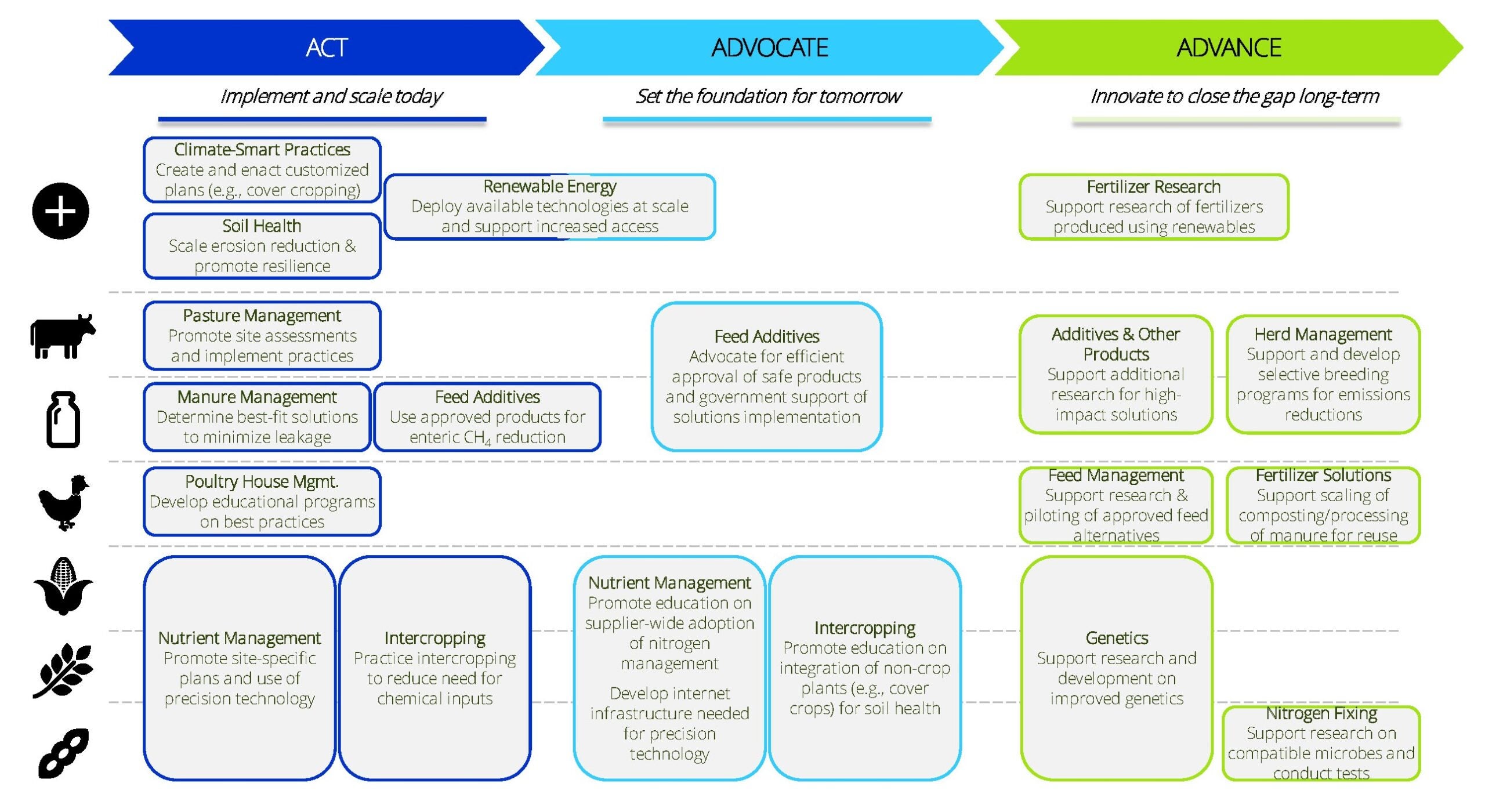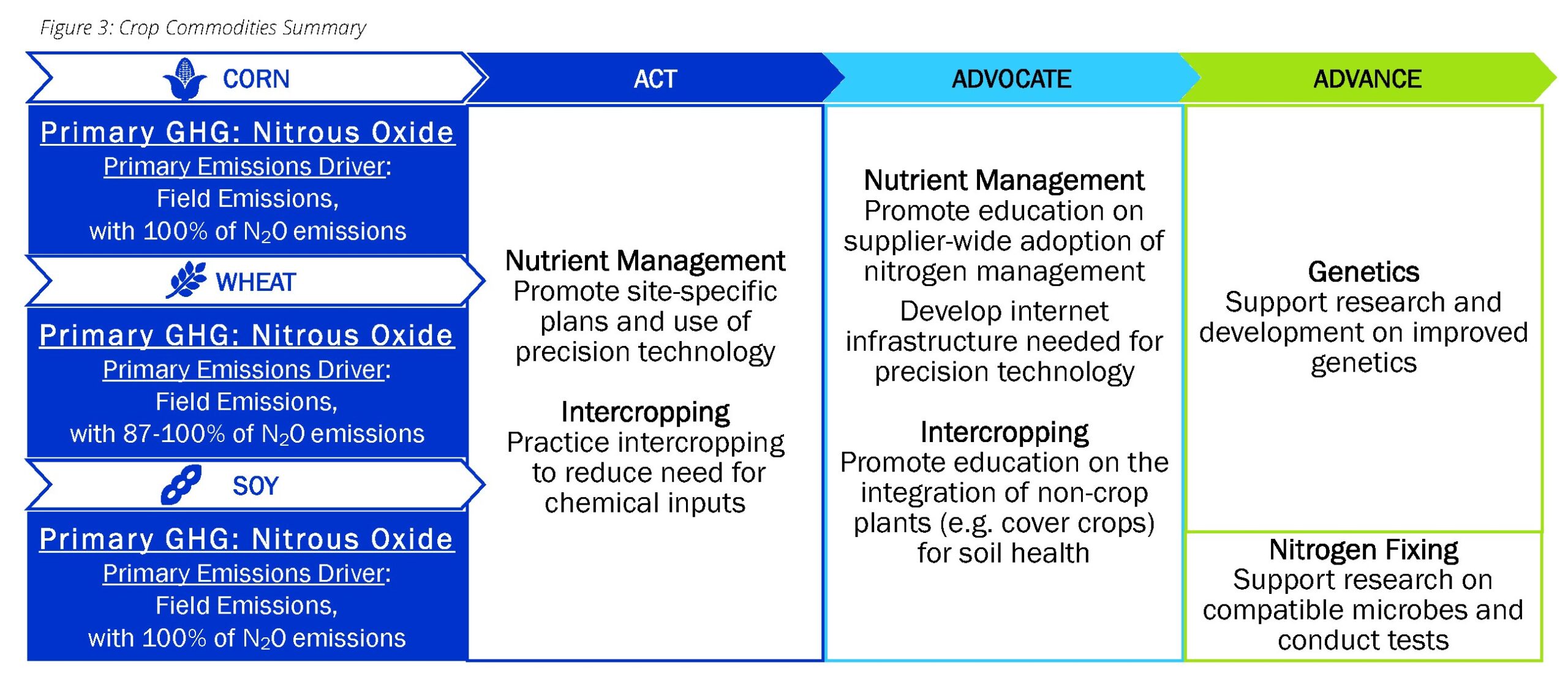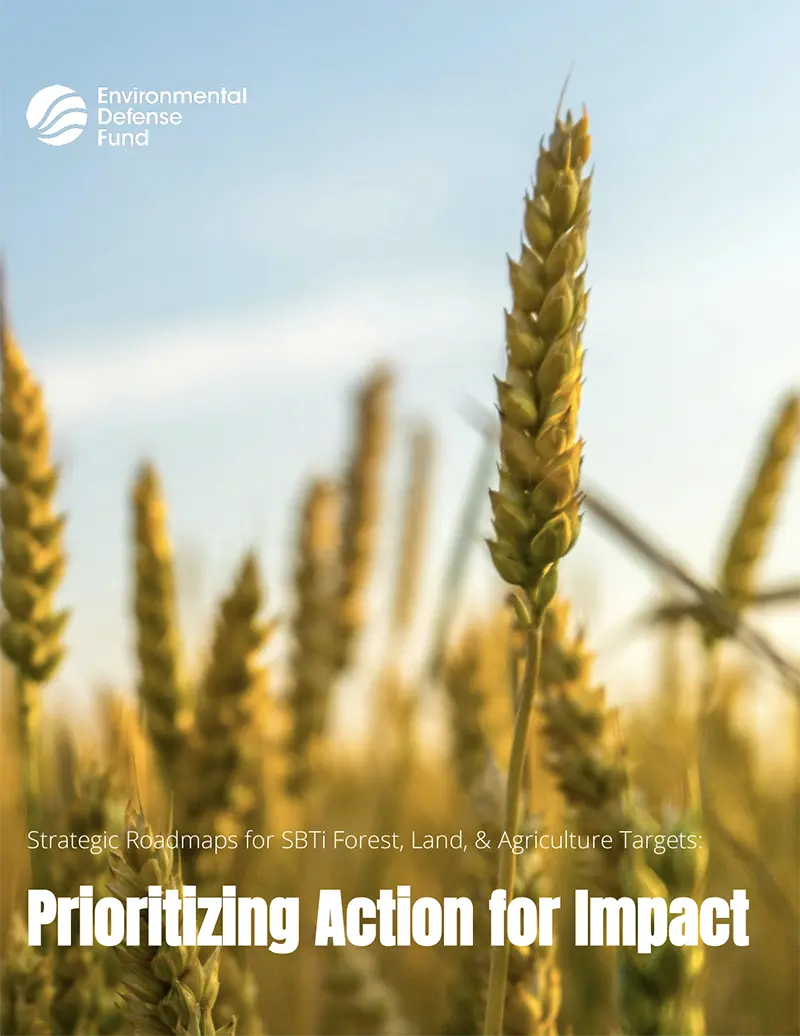Strategic Roadmaps for SBTi Forest, Land, & Agriculture Targets
Strategic Roadmaps for SBTi Forest, Land, & Agriculture Targets
Prioritizing Action for Impact
In this must-read guide, Environmental Defense Fund and Deloitte equip food companies with actionable guidance to more strategically advance ambitious climate targets aligned with the Science Based Targets initiative’s (SBTi) guidance.
Sustainability and procurement professionals tasked with the critical work of reducing food companies’ emissions are both inundated with information and also lacking the much-needed guidance to build a pathway to pursue a climate strategy swiftly and efficiently.
In this report, Environmental Defense Fund, along with experts at Deloitte, have provided example pathways for six key commodities aligned with the Science Based Targets initiative’s (SBTi) Forest, Land, and Agriculture (FLAG) guidance for food companies to more strategically work toward these ambitious climate targets.
This strategic framework, which focuses on the largest sources of emissions by specific greenhouse gas (GHG), will enable companies to prioritize and better plan for the actions needed over the next decade to accelerate progress and meet today’s climate expectations.
Key Findings
The agriculture sector’s significant contribution to GHG emissions has been met with action by many food companies of all sizes that are motivated by the risk of environmental, social, and economic losses resulting from the immediate and near-term effects of a changing climate.
To meet this imperative, companies should prioritize 3 types of action:
1. Act to implement scalable solutions
2. Advocate to reduce barriers to adoption of solutions
3. Advance promising solutions from R&D to commercialization
Our useful guide shares details on how to follow these three steps across six example commodities—wheat, corn, soy, beef, poultry, and dairy.
Moreover, by breaking out prominent agricultural GHGs—methane, nitrous oxide, and carbon dioxide—for six primary commodities as examples, our guide helps sustainability teams deliver a new approach to drive emissions reductions efficiently and in highest service to their climate strategy.
Taking these three actions in tandem and in a way that accounts for the strategic differences among agricultural greenhouse gases will enable companies to better unlock the full extent of emissions reduction necessary to meet their climate targets, deliver maximum impact, and ultimately support swifter progress toward a more resilient agricultural system.

Our Recommendations
Cattle: Methane.
For beef and dairy commodities, methane is the leading GHG in both the regions examined in this report, North America and Europe, but also globally. Piloting enteric methane-reducing solutions and supporting innovation for solutions suitable for beef grazing systems will be necessary for managing methane. Adopting manure management solutions appropriate to farm scale will also be key. For companies sourcing beef and dairy products from outside North America and Europe, improvements in animal health and addressing nutritional deficiencies are critical to reducing outsized CH4 emissions intensities.

Poultry: Carbon Dioxide & Nitrous Oxide.
Emissions of carbon dioxide and nitrous oxide take precedence for poultry. Exploring feed alternatives, improving litter management, reducing energy use and utilizing renewable energy sources are all key opportunities for poultry.

Corn, Soy, and Wheat: Nitrous Oxide.
Across the crop commodities, nitrous oxide emerges as the most significant GHG. Climate-smart agriculture practices, protective measures for soil health, and reduced fuel and energy use are all recommended solutions across the crop commodities.

